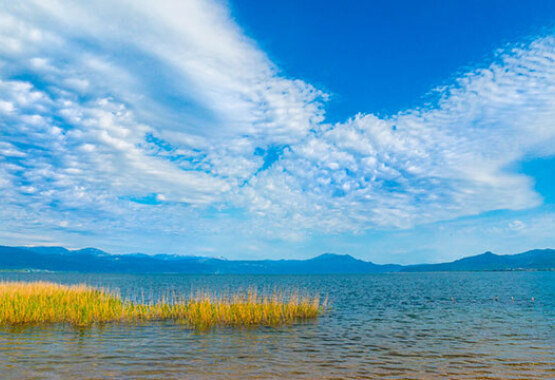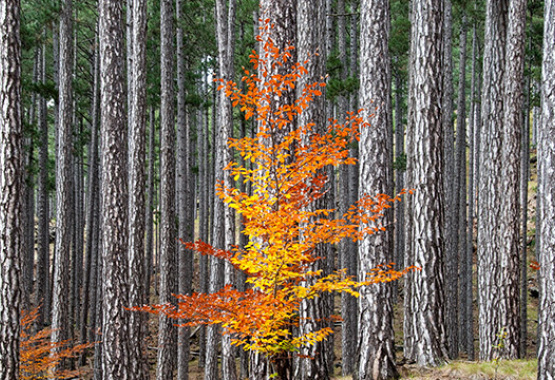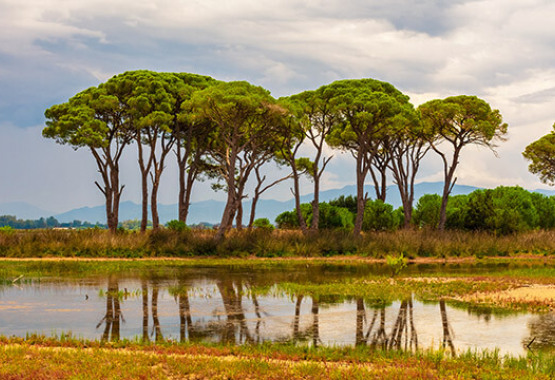
AROUND GREECE
According to ancient legend, the lake was created when a girl mistakenly sealed the opening of a well, which flooded the village and the nearby plain. Excavations in the area have revealed the existence of settlements thousands of years ago on the banks of the lake. Although these finds are limited in extent, they are significant as they confirm the lake’s existence in antiquity, possibly since the Bronze Age.
Archeological excavations have unearthed a plethora of bone, stone and bronze finds, including plenty of jewelry. Human activity is thought to have flourished in the Iron Age on the river banks. Indicatively, archeologists have discovered an ancient necropolis, while research results suggest that the ruins of an ancient settlement are located under the modern village.
More than 160 species of wild birds nest in the area, including dalmatian pelicans, great white pelicans, lanner falcons, golden eagles, white-tailed eagles and hawks, making it a good observation point. Rare specimens of flora and fauna are found on the banks of Vegoritida, in an area where three lakes - Petra, Zazari and Cheimaritida - are in a way connected. In fact, these are the remains of the old and huge lake of Eordea, which was more than 250 meters deep. Herons live and reproduce in the reeds, while swans also frequent the lake. An important reason why this rich community of birds and aquatic life developed on the lake is that its waters never freeze.
Visitors to Western Macedonia with a few days to spare to explore the area around Vegoritida can head to two of the most popular villages of northern Greece, Agios Panteleimonas and Agios Athanasios. Agios Panteleimonas is only 40km from Florina and is an excellent base for exploring the surrounding area. Its charming tavernas serve meze and local wine made in the village’s famed vineyards. Agios Athanasios, which is also nearby, attracts far more visitors as it is among the most popular resorts of the area.
Activities
Vegoritida is also an ideal destination for cycling and hiking, and lures nature lovers all-year-round. The two most famous ski resorts in northern Greece, Vigla and Kaimaktsalan, are located close to the villages surrounding the lake at a distance of 50km and 35km respectively. The lake is also 30km from the idyllic mountainous village of Nymfaio and less than two hours from Thessaloniki.
Visitors can also swim in the lake in a designated area with umbrellas and sunbeds that blend with the natural environment surrounding Vegoritida. The lake is also a place where visitors can test their sailing, rowing, canoeing, kayaking and kitesurfing abilities or to simply enjoy a boat ride in a “plava”, an old type of vessel encountered in various parts of Macedonia.
Lake Vegoritida
Vegoritida is an ideal destination for cycling and hiking, and lures nature lovers all-year-round.
Lake Vegoritida in the region of Macedonia is Greece’s third deepest lake, with a depth at one point reaching 50 metres. It is divided between the prefectures of Florina and Pellas and is located northeast of Amyntaio and west of Edessa.According to ancient legend, the lake was created when a girl mistakenly sealed the opening of a well, which flooded the village and the nearby plain. Excavations in the area have revealed the existence of settlements thousands of years ago on the banks of the lake. Although these finds are limited in extent, they are significant as they confirm the lake’s existence in antiquity, possibly since the Bronze Age.
Archeological excavations have unearthed a plethora of bone, stone and bronze finds, including plenty of jewelry. Human activity is thought to have flourished in the Iron Age on the river banks. Indicatively, archeologists have discovered an ancient necropolis, while research results suggest that the ruins of an ancient settlement are located under the modern village.
More than 160 species of wild birds nest in the area, including dalmatian pelicans, great white pelicans, lanner falcons, golden eagles, white-tailed eagles and hawks, making it a good observation point. Rare specimens of flora and fauna are found on the banks of Vegoritida, in an area where three lakes - Petra, Zazari and Cheimaritida - are in a way connected. In fact, these are the remains of the old and huge lake of Eordea, which was more than 250 meters deep. Herons live and reproduce in the reeds, while swans also frequent the lake. An important reason why this rich community of birds and aquatic life developed on the lake is that its waters never freeze.
Visitors to Western Macedonia with a few days to spare to explore the area around Vegoritida can head to two of the most popular villages of northern Greece, Agios Panteleimonas and Agios Athanasios. Agios Panteleimonas is only 40km from Florina and is an excellent base for exploring the surrounding area. Its charming tavernas serve meze and local wine made in the village’s famed vineyards. Agios Athanasios, which is also nearby, attracts far more visitors as it is among the most popular resorts of the area.
Activities
Vegoritida is also an ideal destination for cycling and hiking, and lures nature lovers all-year-round. The two most famous ski resorts in northern Greece, Vigla and Kaimaktsalan, are located close to the villages surrounding the lake at a distance of 50km and 35km respectively. The lake is also 30km from the idyllic mountainous village of Nymfaio and less than two hours from Thessaloniki.
Visitors can also swim in the lake in a designated area with umbrellas and sunbeds that blend with the natural environment surrounding Vegoritida. The lake is also a place where visitors can test their sailing, rowing, canoeing, kayaking and kitesurfing abilities or to simply enjoy a boat ride in a “plava”, an old type of vessel encountered in various parts of Macedonia.




